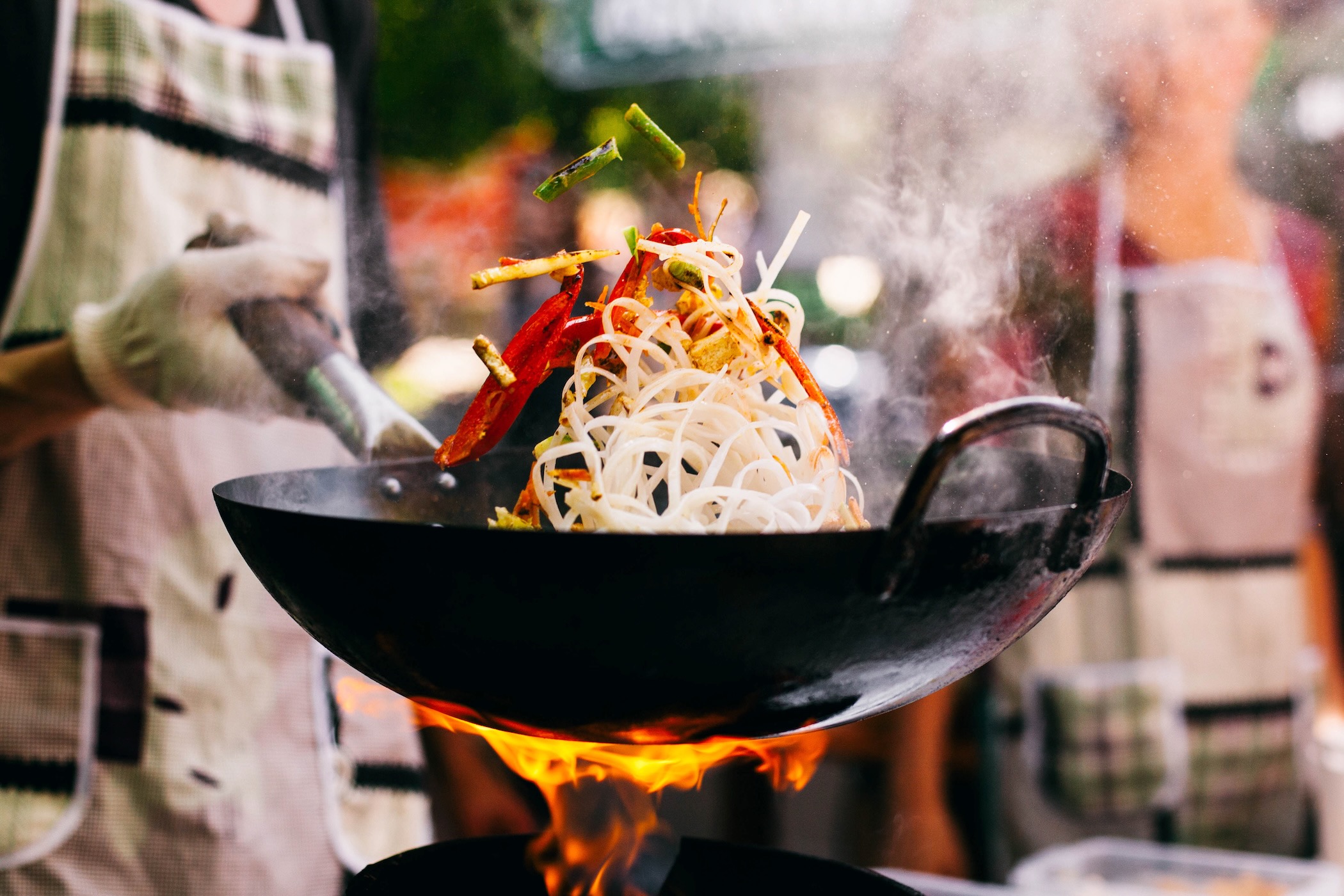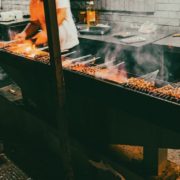The History of the Wok

If Chinese cooking is an art, then the wok is the easel and paintbrush of the Chinese kitchen. Watch one in action and you’ll quickly understand: blazing fire heats a shallow pool of oil, the wok’s contents get tossed in a powerful rocking motion, and deep aromatics fill the air as the ingredients release their natural flavors.
The Chinese wok originated during the Han Dynasty, where it was crafted using raw iron metals. Skilled Chinese blacksmiths would forge the deep, round cooking vessels at a dangerously high heat of 1600°C, then hammer and polish their creations by hand. Despite the intense process, many Chinese woks continue to be made the same way today, as it’s seen as an homage to the blacksmiths that forged these essential Chinese cooking vessels long ago.
After a wok has been forged, it must undergo a seasoning process before it can be used, ensuring its coating is nonstick and that it heats evenly during cooking. The wok is first washed in warm, soapy water, then dried thoroughly. Next, every inch of the wok must be burned over high heat to release impurities in the metal. From there, the wok is cooled and a layer of oil is poured in. The oil, which prevents moisture and rust from forming during the cooking process, is then heated until a glossy protective patina is formed. At this point, you’re left with a beautiful fully-seasoned wok.
Ready for some Chinese food? Order some via Shef right now.















